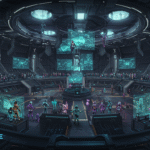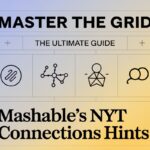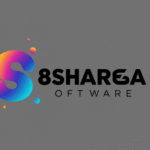Ever sat there, staring at a grid of words, feeling like you’re chasing a shadow in the fog? Yeah, me too.
The NYT Connections Puzzle is that cheeky little brain teaser that’s got everyone from your aunt who swears she hates puzzles to your neighbor’s kid hooked and guessing.
Created by the brilliant Wyna Liu, this word puzzle ain’t your run-of-the-mill crossword or Sudoku — it’s a mental gymnastics meet for your cognitive flexibility and pattern recognition. But hey, it’s not just about brute smarts.
It’s a dance of flow state, the kind where your brain is clicking in just the right way and you forget you’re even solving a puzzle.
Now, if you’re wondering how to get through today’s Mashable Connections Hint faster, or just wanna sharpen your puzzle prowess, you’re in the right place.
We’ll dive into some killer strategies, sprinkle in some puzzle psychology, and crack open the secret sauce that’ll make you see those word groups like a pro. Ready? Let’s untangle the connections.
The Puzzle Grid: What’s Going On Here?
First off, the NYT Connections Puzzle drops you a grid of 16 words. Your job? Find four groups of four words each — words that share a common theme, like colors, musical instruments, or animals.
Sounds simple, but here’s the kicker: some words can fit into multiple groups depending on how you slice it.
That’s where your brain’s neural pathways get a workout, forcing you to think in fresh ways, dodge confirmation bias, and avoid the classic “oh that word must go there” trap.
The puzzle uses color-coded difficulty — Yellow, Green, Blue, Purple — that shows how tough each cluster is. Think of it as a GPS, guiding you through the maze without letting you get lost in frustration.
Mashable Connections Hint: The Power of Strategic Guessing
Alright, straight up, not every guess is dumb. In fact, strategic guessing is a legit puzzle-solving strategy when you’re stuck.
Here’s the scoop: early on, try grouping obvious pairs or trios — say, “Lemon,” “Mustard,” and “Gold” might click as colors or flavors. From there, use the process of elimination for the trickier words.
Sometimes, you gotta embrace mistake analysis. Yeah, messing up one cluster is like a mini brain reset; it primes your mental circuits and opens up new routes to the answer. The key? Don’t be shy to unpick your steps, it’s all part of training those neural activation zones.
One thing to remember from the American Puzzle Society studies: the best solvers keep their eyes peeled for abstract connections beyond the obvious literal meanings. A “bass” isn’t just a fish but also a musical instrument. See? It’s wordplay with a capital P.
Puzzle Integrity and Community Interaction
Ever noticed how discussing a puzzle with friends or online communities can suddenly clear the fog? That’s not coincidence — it’s community interaction in action. Sharing hints or debating possible clusters keeps your puzzle integrity intact by preventing you from falling into confirmation bias traps.
The University of Exeter ran a study showing that puzzle players who engage in forums or puzzle groups develop better mental flexibility. Why? Because hearing different perspectives breaks down your rigid thought patterns and expands your cognitive toolkit.
Category Spotlight: Color-Coded Clusters and Common Themes
Some clusters repeat like favorite songs in a playlist. Animals, colors, countries, musical instruments, and tools show up often. Knowing this ahead gives you an edge. For instance, if you spot “Canary,” “Gold,” “Lemon,” and “Mustard,” you’re likely looking at a color group.
But watch out—sometimes the puzzle throws in curveballs, like “Cake” in a cluster with “Off,” “Over,” “Up” — that’s a trickier, more abstract wordplay on phrases or idioms.
When tackling the harder clusters — marked with Blue or Purple difficulty — focus on thematic depth. Words might connect through a shared origin, function, or cultural reference rather than just surface meanings.
For example, “Hammer,” “Nail,” “Saw” are clearly tools, but what if “Stick” is tossed in? Could be part of the tools group, or maybe a musical instrument group (think drum sticks). This calls for some creative mental gymnastics.
Brain Benefits: Why NYT Connections Puzzle Is More Than Just Fun
Aside from the sheer joy of piecing words together, tackling the Connections game is like a workout for your brain.
The University of Michigan highlights that puzzles like these boost brain function, especially in areas related to pattern recognition and problem solving. They help build and strengthen neural pathways, contributing to long-term cognitive health.
Plus, entering a flow state while solving this puzzle triggers a rewarding dopamine release, giving you that sweet hit of satisfaction after each cluster nailed. This earned achievement keeps players coming back day after day — it’s addictive in the best way.
Advanced Puzzle Techniques for the NYT Connections Puzzle
So you wanna level up, huh? Here’s some ninja moves to try:
- Clue Tiering: Start with the vague and work towards the specific. Identify broad categories first (like colors or animals) before tackling nuanced groups like movie titles or cooking terms.
- Homophones & Linguistic Trickery: Some words sound alike but mean different things; watch for these. “Bass” the fish vs “bass” the musical note can throw you off if you’re not careful.
- Progressive Hint Revealing: Use the Mashable Connections Hints if you’re really stuck, but don’t peek too early. The joy’s in the chase.
- Group Testing: Physically moving words around (on paper or mentally) can help you see unexpected clusters.
- Puzzle Breakthrough Moments: When you spot a hidden pattern, take a breath and double-check your clusters for any overlaps.
How to Write Custom Messages Inspired by Puzzle Solving
Okay, flipping gears a bit — ever thought about how you can use the logic and creativity from solving puzzles like these in your daily communication? Whether it’s crafting birthday wishes or writing heartfelt notes, the art of connecting ideas seamlessly can seriously upgrade your message game.
Think about it: just like in the Connections game, where words link in surprising ways, personal messages should connect feelings, memories, and hopes uniquely.
Instead of “Congrats on your new job,” try layering your message with related themes: “Here’s to the start of your next adventure — may your days be as bright as a canary’s song and as steady as a hammer’s swing.”
Use humor, metaphors, or unexpected references — like mixing musical instruments with motivational quotes — to stand out. Puzzle-solving teaches us that the unexpected connection often hits the deepest chord.
The Cultural Side of Puzzle Enjoyment and Shared Experience
Across the globe, puzzles are more than pastimes — they’re rituals and bridges. In Japan, the art of wordplay is celebrated in games like Shiritori; in Europe, cryptic crosswords are cultural institutions.
The University of Exeter notes how puzzle engagement fosters social psychology benefits, creating bonds through shared challenge and triumph.
And hey, Wyna Liu’s NYT Connections Puzzle is tapping into that universal love for mental exercise — it’s about challenging yourself, learning from errors, and feeling that collective pulse of a community solving something together.
Final Thoughts: Elevate Your Puzzle Play with These Takeaways
- Embrace mistakes as stepping stones — they’re your brain’s way of rerouting.
- Look beyond the obvious; puzzle words often have multiple meanings or fit into abstract categories.
- Use community resources and forums to see fresh angles.
- Stay patient and enjoy the mental flexibility boost — it’s a workout disguised as fun.
- Personalize your puzzle strategy by mixing analytical thinking with creative leaps.
And hey, if you’ve got a favorite hint or a cool way you tackle today’s NYT Connections Puzzle, drop it in the comments. Sharing your wins and fails only makes the game richer for all of us.
Remember, whether you’re stacking “Red,” “Blue,” “Green,” and “Yellow” like puzzle pieces or weaving words into your daily chats, the beauty lies in the connections we make — both in puzzles and in life.
So go on, get cracking on those word groups, flex those brain muscles, and let the joy of puzzle enjoyment light up your day!
Frequently Asked Questions
connections hint today mashable
Mashable’s connections hint today offers fresh, spoiler-free clues to help you solve the latest NYT Connections puzzle faster and more confidently.
connections hint mashable
Connections hint Mashable provides strategic tips and pattern recognition guidance without revealing the full answers, enhancing your solving skills.
mashable connections hint today
Mashable connections hint today delivers timely and subtle nudges tailored to the daily puzzle, helping players avoid common traps and stay on track.
nyt connections hints mashable
NYT Connections hints from Mashable support players by offering helpful suggestions that improve accuracy and reduce puzzle-solving frustration.
connections hints mashable
Connections hints Mashable are designed to assist all skill levels with thematic clues, elimination strategies, and warnings about tricky wordplay.
mashable connections hint today
Mashable connections hint today equips solvers with essential tips to navigate difficult puzzles, focusing on abstract categories and word associations.
connections hint today mashable
The connections hint today Mashable provides real-time help that balances challenge and assistance for smoother puzzle completion.
connections hint mashable
Using connections hint Mashable regularly can boost your pattern recognition and help build long-lasting puzzle-solving confidence.
connections hint mashable today
Connections hint Mashable today offers effective guidance tailored for the current puzzle, helping solvers improve speed and accuracy.
mashable connections today
Mashable connections today delivers daily puzzle insights and strategic hints to enhance your NYT Connections solving experience.











